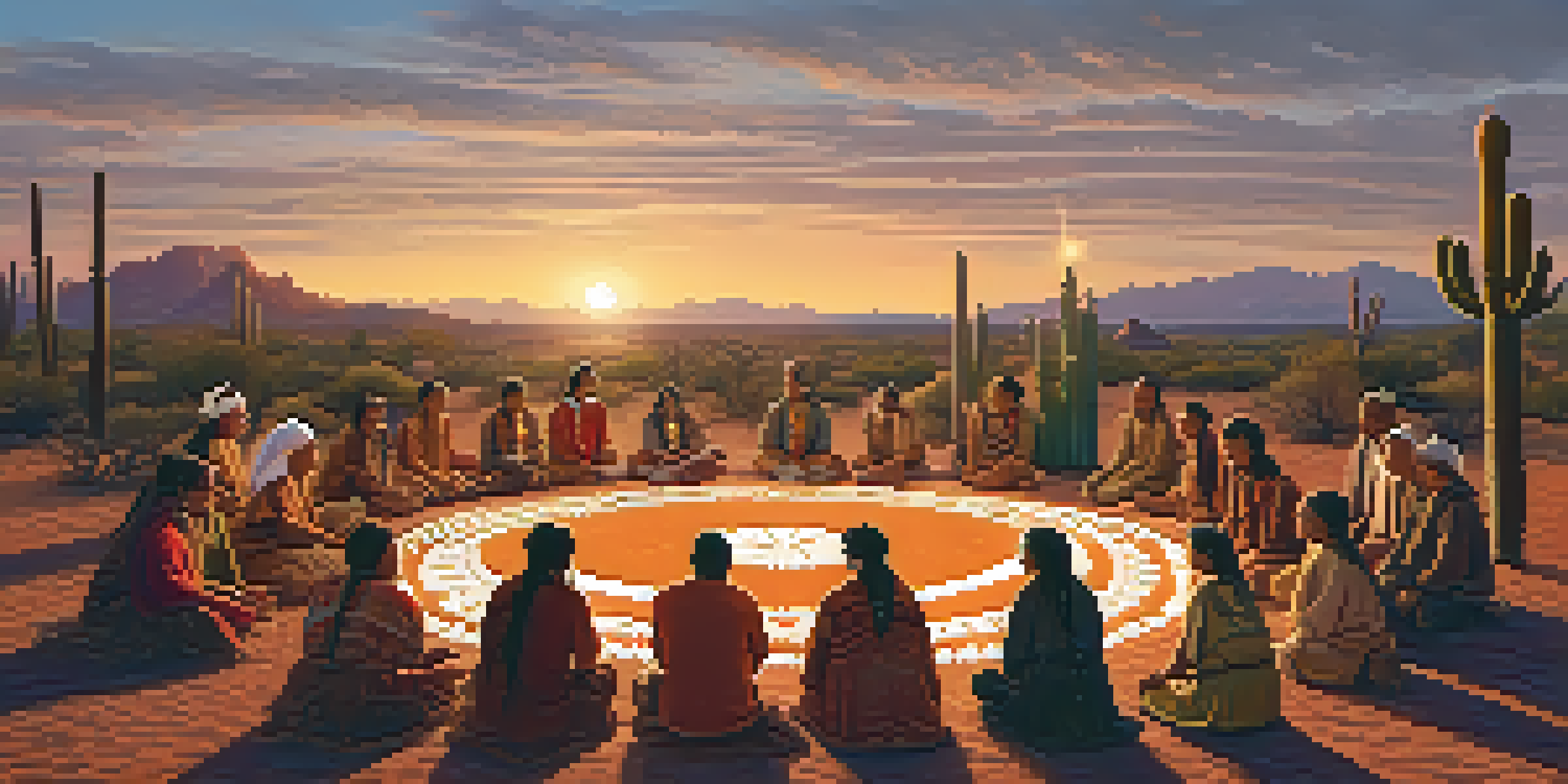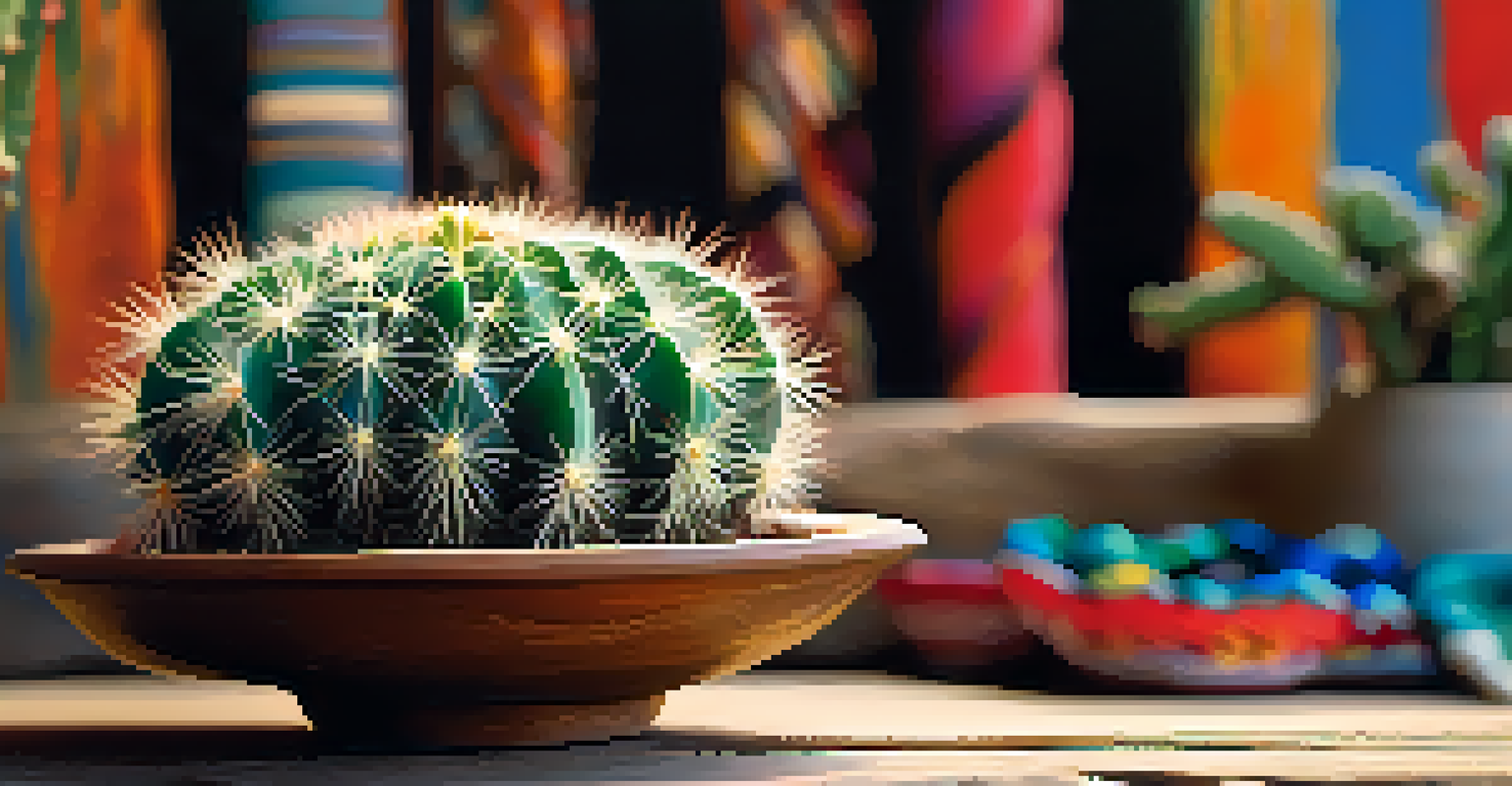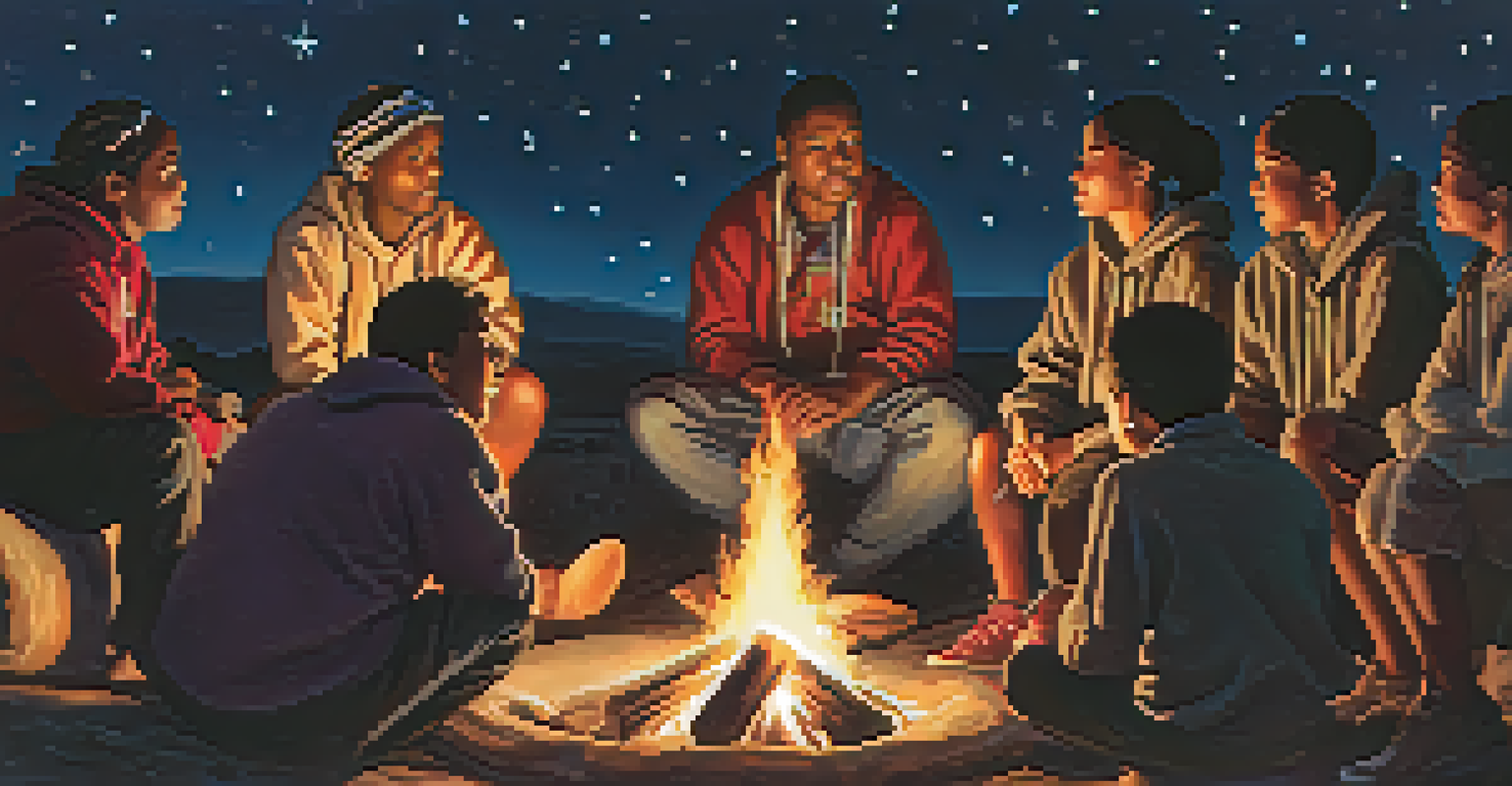Elders as Knowledge Keepers of Peyote Traditions

Understanding Peyote: A Sacred Plant in Indigenous Culture
Peyote, a small cactus native to North America, holds significant spiritual value among various Indigenous peoples. Known for its psychoactive properties, it has been used in traditional ceremonies for centuries. For many tribes, peyote is not just a plant; it's a bridge to the spiritual world and a source of healing. Understanding its role requires a deep appreciation of the cultural contexts in which it is revered.
The plants are our brothers and sisters. They are not just objects; they have a life of their own, and they teach us about ourselves and the world around us.
The use of peyote is often intertwined with rituals and practices that have been passed down through generations. This sacred plant is more than a psychedelic; it is a symbol of connectivity to ancestry and the cosmos. Elders, as the custodians of this knowledge, play a crucial role in teaching younger generations about its significance and the proper ways to engage with it. Their wisdom helps maintain the integrity of these traditions.
By recognizing the importance of peyote within their communities, we can appreciate how it shapes identity and spirituality. The reverence for this plant is comparable to how other cultures might view wine in religious ceremonies, highlighting its role as a communal and spiritual facilitator.
The Role of Elders in Preserving Peyote Traditions
Elders are often regarded as the backbone of Indigenous communities, holding vital knowledge about traditions, stories, and spiritual practices. In the context of peyote, they are the ones who teach the significance of the plant and its use in ceremonies. Their teachings are not merely academic; they are rich with personal experiences and insights that cannot be found in textbooks.

Through storytelling and participation in rituals, elders pass down teachings about the proper ways to use peyote. This includes not only the preparation and consumption but also the ethical considerations and intentions behind its use. Their guidance ensures that the sacredness of the practice is respected and maintained, preventing it from being trivialized or commercialized.
Elders Preserve Peyote Traditions
Elders play a crucial role in teaching the significance and proper practices surrounding peyote use in Indigenous ceremonies.
Moreover, elders serve as role models, embodying the values of respect, humility, and gratitude that come with working with peyote. They remind younger generations that these traditions are not just for personal exploration but are also about community and shared responsibility.
Intergenerational Knowledge Transfer: A Living Tradition
The transfer of knowledge from elders to youth is a dynamic and ongoing process. Elders often engage with younger members of the community through various activities, including ceremonies, workshops, and informal gatherings. This interaction fosters a sense of belonging and continuity, ensuring that the wisdom surrounding peyote traditions is not lost.
To teach is to touch a life forever. The wisdom of the elders is a treasure that is meant to be shared and respected.
During these exchanges, young individuals learn about the historical context of peyote use, its medicinal properties, and the significance of the rituals associated with it. They also gain insights into the broader cultural values of their communities, such as respect for nature and the importance of community cohesion. This holistic approach strengthens their connection to both the plant and their heritage.
Additionally, this intergenerational exchange can empower youth to become advocates for the preservation of their traditions. By understanding the depth of their cultural practices, they can confidently share their knowledge with others and stand against cultural appropriation, ensuring that peyote traditions are honored and respected.
Challenges Faced by Elders in Knowledge Preservation
While elders play a critical role in preserving peyote traditions, they face various challenges that threaten this knowledge transfer. One significant issue is the declining number of elders as many pass away, taking their invaluable wisdom with them. This loss creates a gap in knowledge that is difficult to fill, particularly as younger generations often face distractions from modern technology and lifestyles.
Another challenge is the misunderstanding and stigmatization of peyote use in wider society. As public perception shifts, some may view peyote solely as a drug rather than a sacred plant with deep cultural significance. This stigma can discourage younger members from engaging with their traditions, leading to further erosion of knowledge and practice.
Intergenerational Knowledge Transfer
The dynamic exchange of knowledge between elders and youth ensures the continuity and relevance of peyote traditions.
Additionally, the commercialization of peyote and its cultural practices poses a threat. As some individuals exploit these traditions for profit, it undermines the spiritual importance and ethical considerations that elders strive to uphold. This situation calls for a collective effort to protect and respect the traditions that have been nurtured over generations.
Modern Adaptations of Peyote Practices
In recent years, many Indigenous communities have begun to adapt their practices around peyote to fit contemporary contexts. This evolution is not about abandoning tradition but rather finding ways to make it relevant for younger generations. Elders often lead these adaptations, ensuring that the core values and teachings remain intact while embracing modern methods of communication and education.
For instance, some communities have turned to social media platforms to share their knowledge about peyote and its significance. This outreach helps educate a broader audience while also appealing to younger members who may prefer digital engagement. By using technology, elders can foster a sense of community and shared learning, even across geographical distances.
These adaptations also include blending traditional practices with new ideas that resonate with the current generation. Elders might incorporate contemporary art, music, or storytelling methods into ceremonies, making them more engaging and relatable. This approach not only preserves the tradition but also revitalizes it, encouraging active participation from youth.
The Spiritual Significance of Peyote in Healing
Peyote is often recognized for its psychoactive properties, which many believe facilitate spiritual healing and personal growth. Elders emphasize that engaging with peyote is not just about the experience but about approaching it with intention and respect. This mindset fosters a deeper understanding of oneself and one’s place in the universe.
Ceremonies involving peyote often focus on collective healing, allowing participants to support one another in their journeys. Elders guide these rituals, infusing them with their knowledge and experience, which adds layers of meaning to the practice. This communal aspect reinforces the idea that healing is not just an individual endeavor; it’s a shared responsibility among community members.
Challenges Threatening Peyote Culture
Declining elder populations, societal stigma, and commercialization pose threats to the preservation of peyote practices.
Furthermore, the spiritual insights gained from peyote experiences can lead to profound transformations in one’s life. Elders often share stories of their own journeys, illustrating the impact that peyote has had on their personal healing and growth. By sharing these experiences, they inspire younger generations to explore their paths while remaining rooted in their cultural heritage.
Looking Ahead: The Future of Peyote Traditions
As we look to the future, the role of elders in preserving peyote traditions remains critical. Communities are increasingly recognizing the need to document and share this knowledge to ensure its survival. This might include creating educational programs, written resources, or digital archives that capture the teachings and stories of elders.
Collaboration between elders and youth will be essential in this effort. By actively involving younger generations in the preservation process, communities can foster a sense of ownership and responsibility toward their traditions. This partnership can pave the way for innovative approaches to keeping peyote practices alive and relevant.

Ultimately, the journey of preserving peyote traditions is a shared one, reliant on the wisdom of elders and the enthusiasm of youth. Together, they can navigate the challenges and opportunities that lie ahead, ensuring that the sacredness of peyote continues to be honored for generations to come.